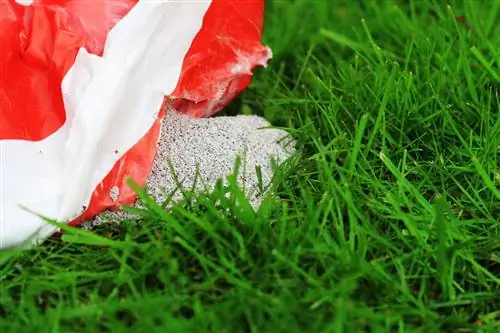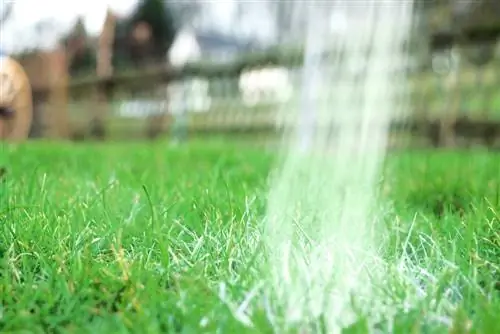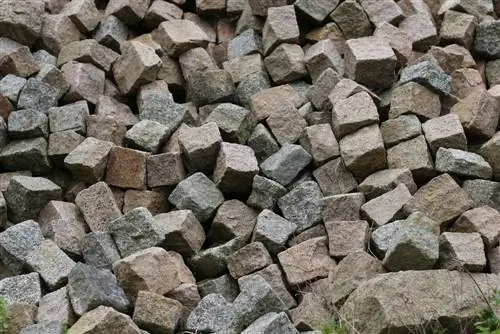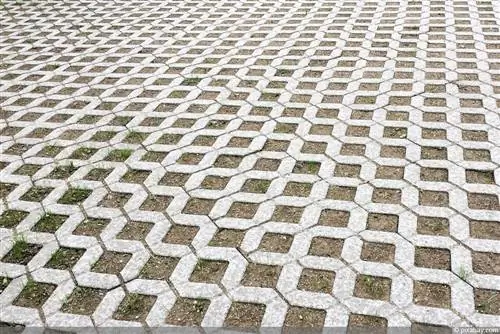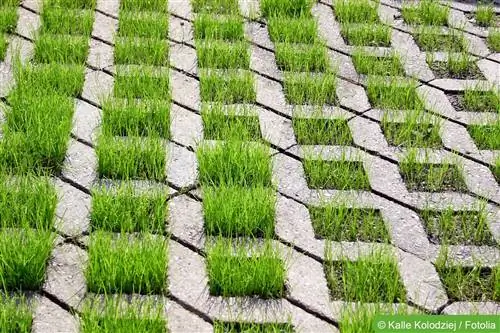- Author admin [email protected].
- Public 2023-12-17 03:39.
- Last modified 2025-06-01 06:48.
Moss is annoying if it doesn't come along as an egg bed in the Easter basket. It particularly likes to settle where it is shady and damp: preferably on paving stones, between paving stones and on lawns. From flame burners to joint cleaners, there are numerous means of removing moss and are usually selected depending on the effort and the affected area. Although mosses do not have deep roots, it often requires a considerable amount of work to remove them without leaving any residue.
Moose
The best way to drive away a troublemaker is to know their habits and preferences. With this knowledge you can try to make it as uncomfortable for him as possible. These types of moss belong to the deciduous mosses (Bryophyta). The common shortbush moss, crutch-shaped shortbush moss, cone moss and Sparrigen Kranzmoos are most common here. These species are particularly resistant to environmental toxins. They can also survive longer dry periods. Other species react much more sensitively and are therefore protected.
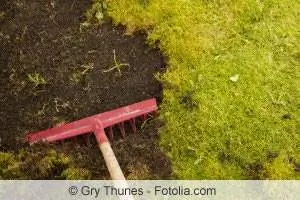
Nevertheless, mosses love moist and shady locations with slightly acidic soil. They like mild winters best. Mosses only have root-like threads (rhizoids). They can also absorb and store water through their above-ground parts. That's why you can even find them on stones and wood. Mosses reproduce through spores in the air. This makes them very flexible in their choice of location.
Lawns
Prevention
By properly planting a new lawn, you can save yourself a lot of trouble with moss and weeds in the following years.
- Lawn needs a sunny to mixed shade location
- loose the soil well beforehand and mix it with compost
- If the soil tends to become waterlogged, adding sand can help
- improve heavily compacted soils by creating drainage
- Avoid adding peat
- If a soil sample shows a pH value that is too acidic, mix in some lime
- when purchasing seeds: do not buy cheap seeds
- if applicable Buy lawn seeds that suit the location (e.g. shade-tolerant varieties, pH-tolerant varieties)
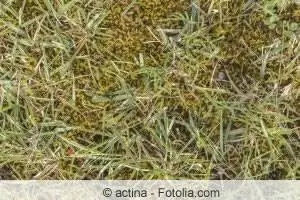
Tip:
Very unfavorable locations for lawns are shady corners under trees or heavy, compacted soil. It hardly makes sense to sow lawns here. Perhaps shade-tolerant ground cover perennials are an alternative here.
Measures
Depending on the size of the lawn and the affected area, there are several ways to remove the moss. Small moss pads can be removed manually quite easily. The gap should be filled directly with lawn reseeding. For larger infestations, only scarifying makes sense. After scarifying, you can sow again
Tip:
After scarifying, do not cut the lawn too short (approx. 4 cm). Supply the lawn with sufficient nutrients so that the turf grows as densely as possible.
Another option for light infestations is to apply appropriate moss killer. However, you should always keep in mind that a moss killer, similar to a headache tablet, can only combat the symptoms. It is best to use these remedies, if so, only together with measures against the causes of the infestation.
Wood ash (only clean natural ash without varnish or similar) is also often used as a natural means of combating moss and at the same time fertilizer for the lawn. Wood ash is a good fertilizer, neutralizes the soil and thus removes the nutrient base from the moss. Iron fertilizer against moss is also recommended again and again. But be careful, it puts a strain on the soil and the gardener and only causes superficial parts of the plant to die. Basically, this makes the soil more acidic and therefore more attractive for mosses
Tip:
Simply applying lime doesn't help remove the moss. An acidic soil is often caused by waterlogging and air impermeability. Here it's time to get to the cause and loosen or drain the soil.
Paving, paving joints, terrace slabs and Co
Every home and garden owner regularly has to deal with annoying moss formation in the paving joints, and sometimes also on the stones. This is then scrubbed, scratched, sprayed and burned.
Chemistry
That sounds like the easiest method. Apply an appropriate agent and wait until the moss and weeds have died. Aside from the fact that chemical poisons should have no place in nature, it is also forbidden. Paved areas must not be treated with pesticides. They do not seep into the ground, but are flushed into the sewage system, where they cause major problems for the waterworks when it comes to drinking water treatment.
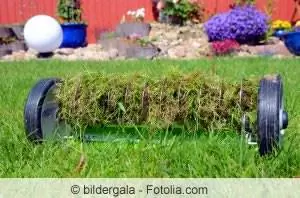
Home remedies
The use of harmless-sounding substances such as vinegar and s alt has recently been banned under criminal law. The damage to the groundwater is too great.
Pure Cola or soft soap with water are two of the permitted remedies. A mixture of soda, sauce thickener and water also appear as tips, as does hydrogen peroxide. For better or worse, everyone has to make their own experiences here, because reports about the application successes read quite contradictory.
High-pressure cleaner
Processing the stones with a high-pressure cleaner is also effective. But be careful not to hold the spotlight vertically or with too much pressure on the joints. This work can be done with your back upright, but all the removed moss pieces will splash around. So you not only have to clean yourself thoroughly afterwards, but also your surroundings.
flaming device
Smaller areas can be worked on relatively easily with a gas burner. In any case, test beforehand whether the respective plaster material does not change during this treatment. The models with an open flame and a gas cartridge are very affordable. However, these only remove the moss and weeds very superficially.
Group cleaner
There are electric joint cleaners and lots of more or less practical scraping devices for manual use. The latter should have a long handle that is easy on the back. What matters here is the quality of the knife.
Prevention
You can prevent excessive moss infestation when creating terraces and paths:
- when selecting stones: smooth surfaces such as granite, marble and ceramics are an unfavorable breeding ground
- Stain wooden slats or panels beforehand with linseed oil or beeswax
- A slight slope when laying prevents constantly damp panels
- Use of special joint sand
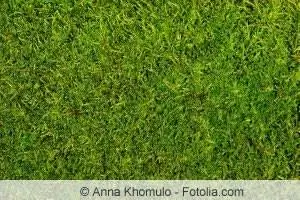
Conclusion of the editors
If you look at the multitude of options for removing moss, you realize that you are probably not alone with this problem. Every year, new technical refinements to combat moss and algae infestation, especially for panels and joints, come onto the market. The right measure can be found individually for each area. The chemical club should actually always be taboo, because it definitely works without it.
What you need to know about moss removal in brief
Before we talk about removing moss using external means, the natural way should be described. It involves hand gardening, but is a promising option for smaller lawns:
- The manual work involved is called scarifying. This comes from Latin verticalis - vertical and French coutre - knife.
- Verticutting refers to a type of vertical cut with a knife.
- The measure is aimed at combating the thatch created by leftover clippings and dead plant parts.
- This restricts the supply of nutrients, air and water. So your lawn literally can't breathe properly anymore.
- Moss likes this atmosphere and the resulting moisture and forms rich growth.
- When scarifying, this thatch is removed - the lawn can breathe again and grow properly.
- Verticutting should take place between March and October, when the ground is dry and the lawn has been mown beforehand.
- Normally scarification takes place once in spring, then across the board in autumn.
- If lawns are heavily mossy, you can scarify crosswise in one operation.
- This care can also be done with a simple rake, but this requires a lot of effort.
- If you now remove any remaining moss pads by hand, you are very close to having a moss-free lawn.
Various resources are intended to help us remove moss from the lawn more quickly. If you want to be sure when using these substances, you would first have to identify the type of moss. Because the information mentioned here applies to the most common mosses found in our area, but there are mosses that react differently.
Iron sulfate against moss
- To combat moss, iron sulfate fertilizer is initially recommended, as moss does not tolerate iron. It turns black and dies.
- Without changing the basic conditions, only a symptomatic measure, the moss will come back.
- We also recommend liming the lawns. The pH value of the soil should be raised from acidic to neutral.
- In a neutral pH range, the lawn is better protected against moss, as moss loves acidic soils. But be careful, there are also lime-loving mosses!
Moss and weed killer
- There are also special moss killers or weed killers that also remove moss.
- However, there is also a plant protection law in Germany that does not always allow the use of these products.
- If you decide to use this chemical treatment, you should carefully check whether the product is permitted by law.
- However, these remedies are extremely useful for large mossy areas. So don't be shy!


